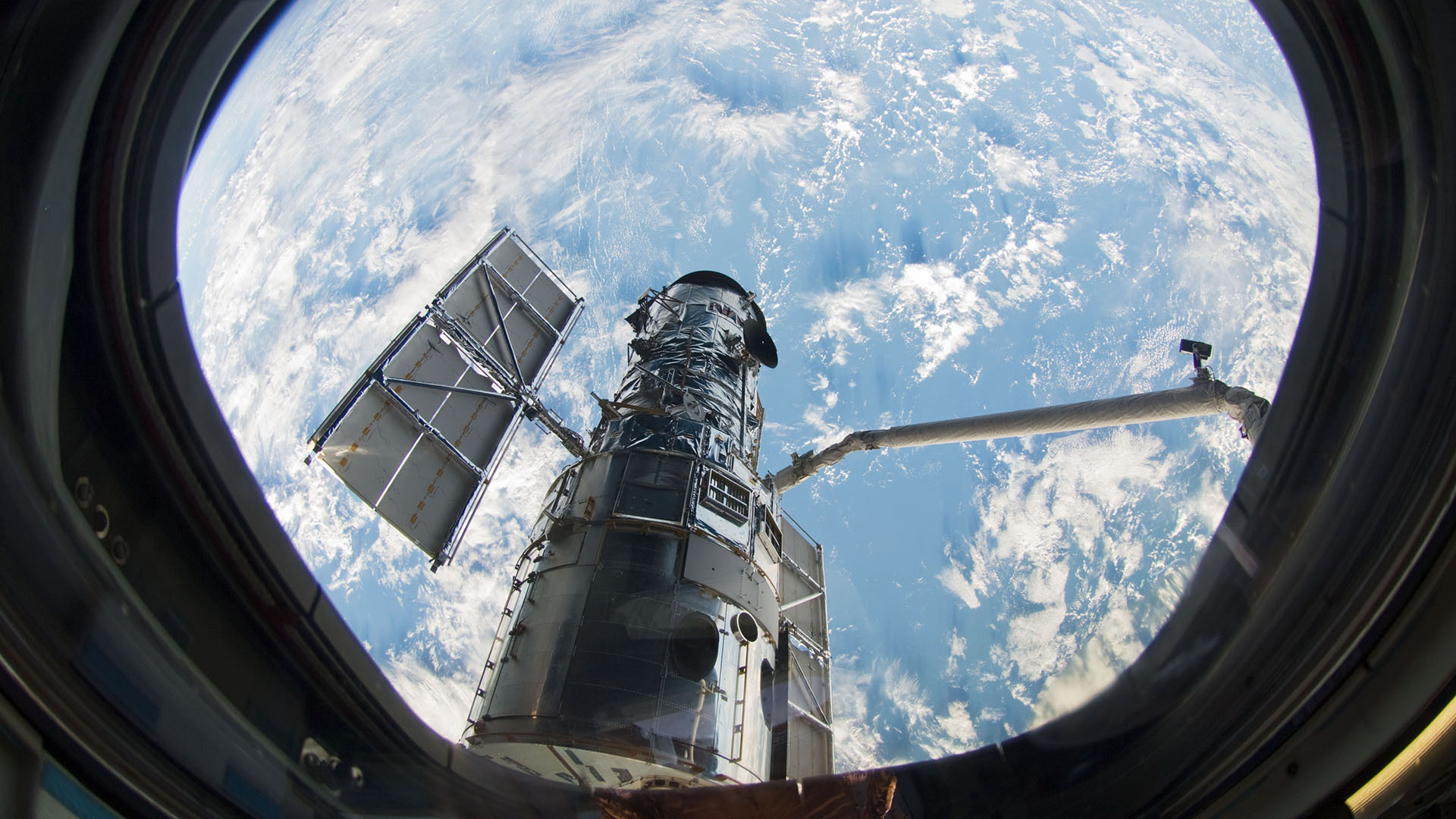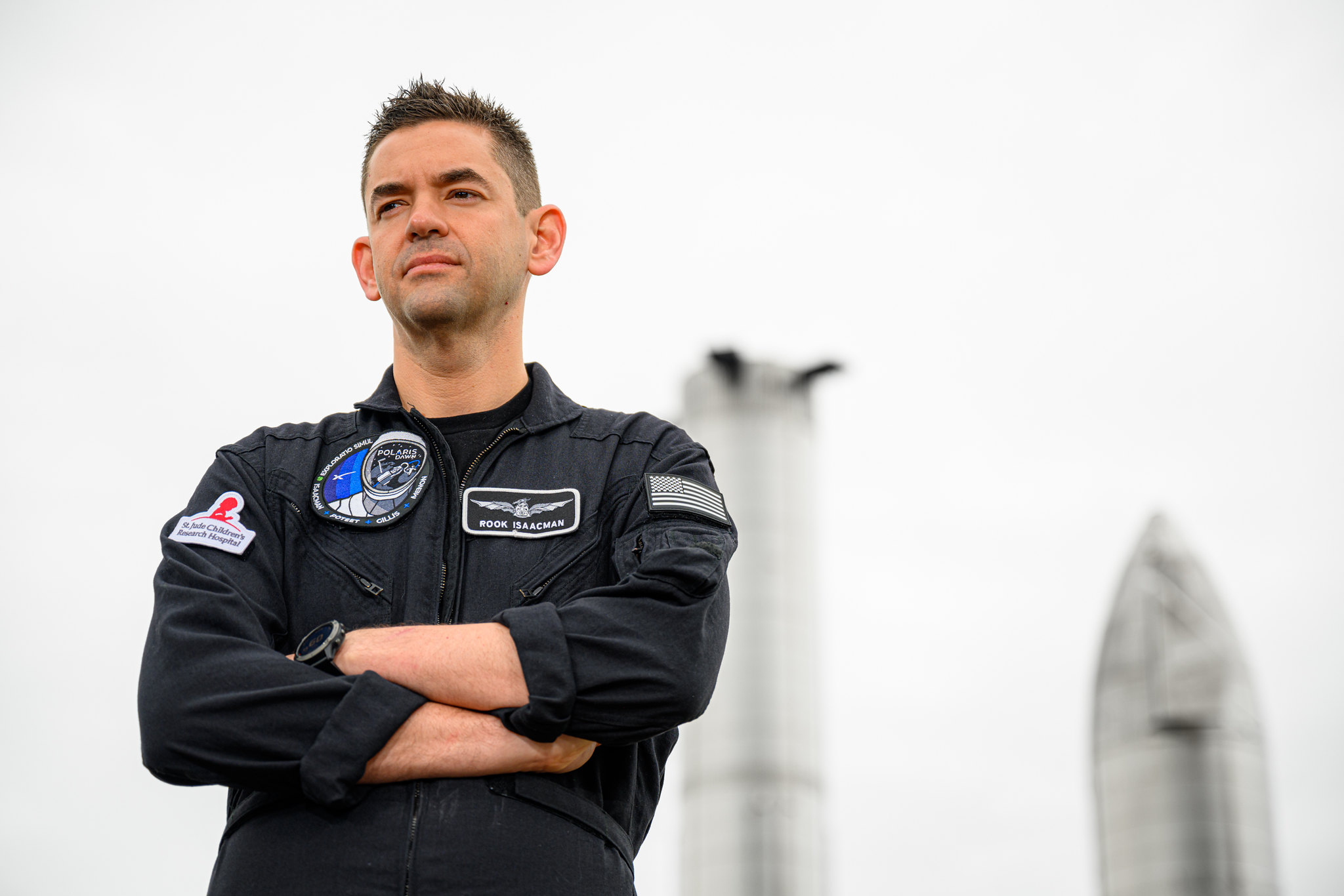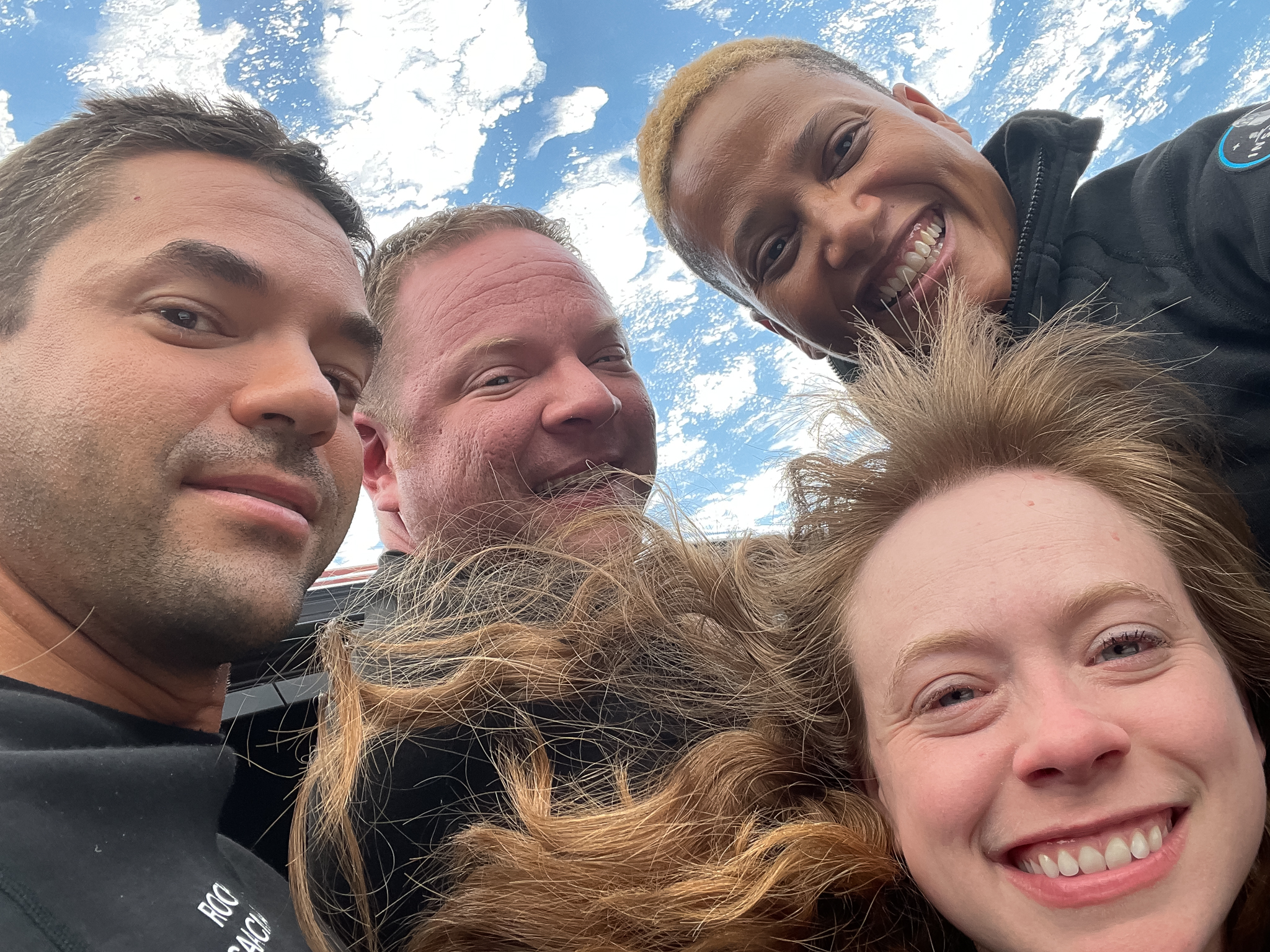
NASA's iconic Hubble observatory still has years of life left in it, and there are ideas in the works to perhaps keep it going for longer — but those proposals may be facing uphill battles.
The Hubble Space Telescope, launched in 1990, has been serviced five times by astronauts and remains in good health. But the telescope is aging and slowly falling toward Earth through natural drag from the atmosphere, so billionaire entrepreneur and private astronaut Jared Isaacman helped spearhead a proposal to send a maintenance mission to the telescope for the first time since 2009.
Isaacman — the commander of the private Inspiration4 mission in 2021, which he also financially backed — is also the funder and an astronaut of the Polaris Program. Polaris is a three-mission private astronaut series flying with SpaceX hardware that plans to run the first-ever commercial spacewalk as soon as this year, with Polaris Dawn.
The Polaris Program's Hubble proposal was first made public in 2022, and NASA asked other companies to send in ideas as well in a request for information (ROI) that closed in early 2023. There have been no official updates about the ROI yet, but the matter recently reappeared in the news with a report from National Public Radio. The broadcaster obtained internal NASA emails through a Freedom of Information Act request, showing a range of reactions that included concerns from some people about the risk to Hubble.
Related: NASA wants ideas to boost Hubble Space Telescope into a higher orbit with private spaceships
Hubble's last servicing mission in 2009 was a difficult decision for NASA. The agency, working in the wake of the Columbia space shuttle disaster of 2003 that killed seven astronauts, initially canceled the planned maintenance mission. Their concern was that the Atlantis space shuttle could not reach the International Space Station for assistance, if necessary, due to Hubble's orbit, far away from the orbiting complex.
After the scientific community expressed concern, however, NASA reinstated the mission with backup: another space shuttle, Endeavour, was put on the launch pad ready to help Atlantis if needed. The carefully choreographed maintenance mission didn't need the backup, however; it met its major servicing goals for Hubble, and the astronauts returned home without incident.

Hubble continues to perform observations, following decades of groundbreaking work in areas ranging from the expansion of the universe to exploring changes in planetary weather.
Hubble cannot continue like this forever, however: instruments and systems are growing older, the telescope periodically experiences "safe modes" (most recently for about a week in April), and the drag of Earth's atmosphere is slowly bringing it down from its orbit of approximately 320 miles (515 kilometers). (For comparison, the ISS is at roughly 250 miles, or 400 km.)
Moreover, the space shuttle and its ample payload bay for repairs is no longer available; that program retired in 2011, requiring new engineering solutions if anyone wanted to service Hubble again. The timeline for such a mission would likely require years of planning, and as there has been no update on the proposals since 2023, the status of any potential new servicing effort is unclear.
Hubble's instruments and primary subsystems (such as solar arrays and batteries) "will continue to operate through the latter part of the 2020s and possibly into the 2030s," assuming no unforeseen occurrences, NASA officials have stated. Isaacman and the Polaris Program, however, hope to keep Hubble going for much longer — perhaps an additional two decades — via a maintenance mission.
Related: Private plan to rescue Hubble Telescope may also target space junk
The lengthy NPR report highlighted several different stances from interviewees and from emails, ranging from praise for the innovation of Polaris and for the quality of the technical work, to concern about a few things. Among those concerns was that Polaris has not performed a spacewalk yet, that the SpaceX EVA [extravehicular activity] suits have not yet been tested in space, that reaching Hubble is difficult even for NASA astronauts and that any spacewalk near the telescope poses a risk of damage to it.
(Isaacman was unavailable for an NPR interview due to his Polaris training schedule, SpaceX did not respond to NPR's requests, and NASA sent brief statements to the broadcaster promising detailed follow-ups publicly in the near future. The European Space Agency, also a funder for the telescope, was not interviewed.)
The joint NASA-Polaris Hubble feasibility study has not yet been released, but "hopefully that comes out," Isaacman wrote on X (formerly Twitter) saying that a technical analysis was performed for six months and a formal recommendation was made.
Isaacman added that he fears the public discourse since then has been incorrectly, in his view, falling into camps including "new space vs. old space, or people who love SpaceX vs. hate SpaceX, incompetent tourist vs. real astronaut."
Related: Photos: NASA's Hubble Space Telescope servicing missions

"It should really have only been about the mission, because if a mission was planned it would have had resources across all the organizations that participated in the study to ensure success," Isaacman emphasized.
"It is not like anyone was going to wing it, especially after a joint study was assembled to determine generally how a successful mission could be achieved," added Isaacman, whose resume includes more than 6,000 hours piloting various aircraft, including time dealing with contingencies or performing flight formations.
Isaacman paid tribute to the past servicing missions managed by NASA. Each required several rounds of spacewalks along with large instrument replacements and the use of the space shuttle's Canadian robotic arm, called Canadarm. Planning for these missions would always take several years, including ample spacewalking practice by agency astronauts.
Advances in electronics over the past 15 years, however, means "you can pack a lot of capabilities in to something the size of an iPhone these days," Isaacman said.

As for the risk to Hubble in servicing it again, Isaacman said that, aside from the fact that Hubble is falling back to Earth, "many of the telescope systems have failed and most redundancy has been lost. This is why it continues to go offline."
In a recent NASA statement, agency officials pointed to a single faulty gyroscope as the culprit behind the April 2024 safe mode incident, as well as another in November 2023. But there are still two other gyroscopes Hubble can use to orient itself in space.
While three of Hubble's six gyros are no longer in operation, and the best efficiencies come from using at least three for pointing, the observatory "could continue to make science observations with only one gyro if required," the statement said. As for Hubble's near-term health: "NASA anticipates Hubble will continue making groundbreaking discoveries," the statement emphasized.
Hubble, Isaacman said, could only be boosted by Polaris until it reaches a "certain altitude," at which point (according to Isaacman) it would either fall uncontrolled back to Earth or — if a rescue effort were desired at that point — would have to be addressed by a robotic mission, which may be at taxpayer expense depending on what NASA wants to do.
"Had a mission been flown, and I was happy to fund it, I believe it would have resulted in the development of capabilities beneficial to the future of commercial space and along the way given Hubble a new lease on life," Isaacman added.
"I acknowledge this is not my telescope to touch and a lot of time has passed from the study till now. Government priorities change, budgets become tight. Regardless of who is funding the mission, it does require contributions of resources from a lot of parties to ensure success. Regardless of what happens from here, I am glad we all, inclusive of NASA, invested the time to see if this could work. Hubble deserved that effort."







